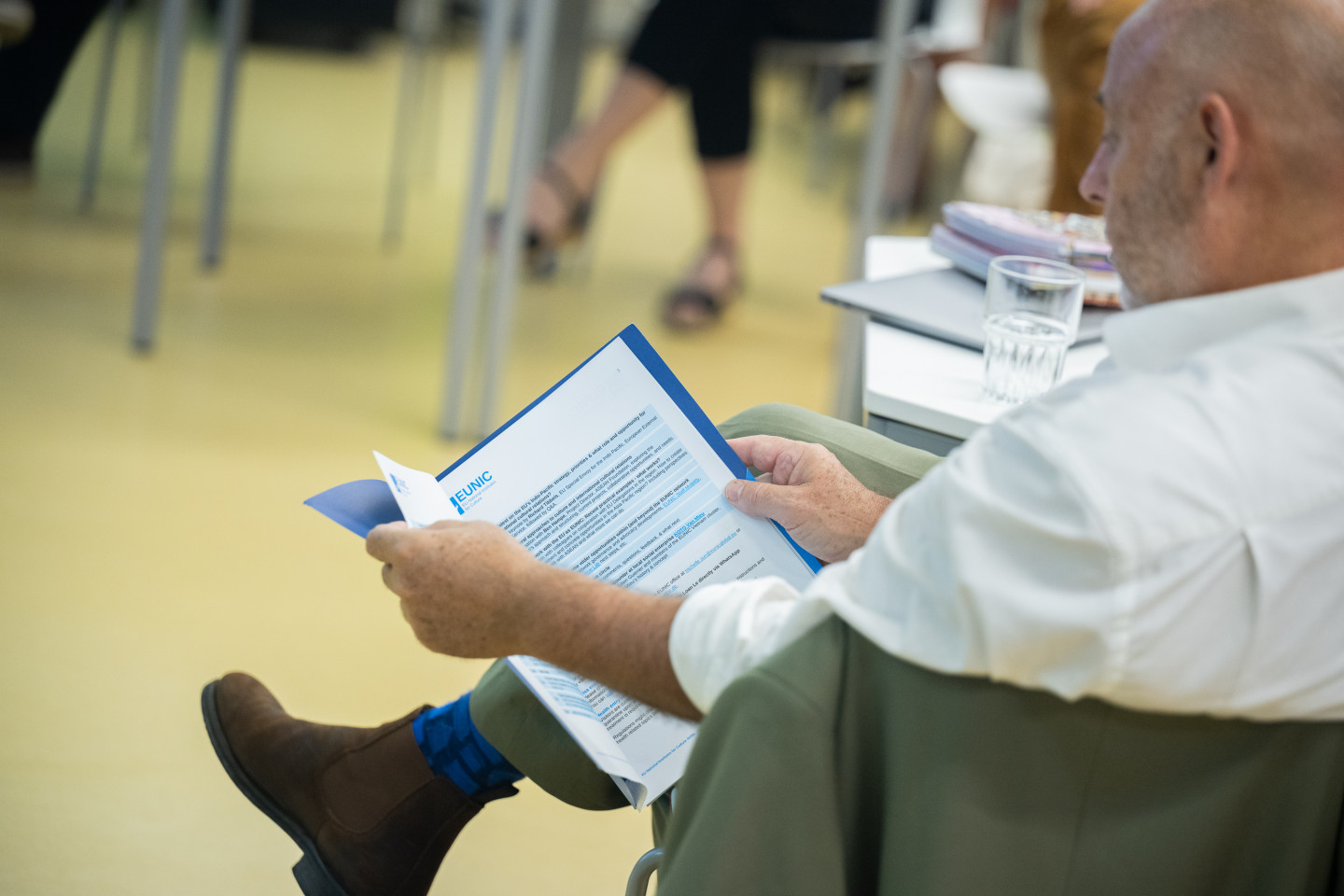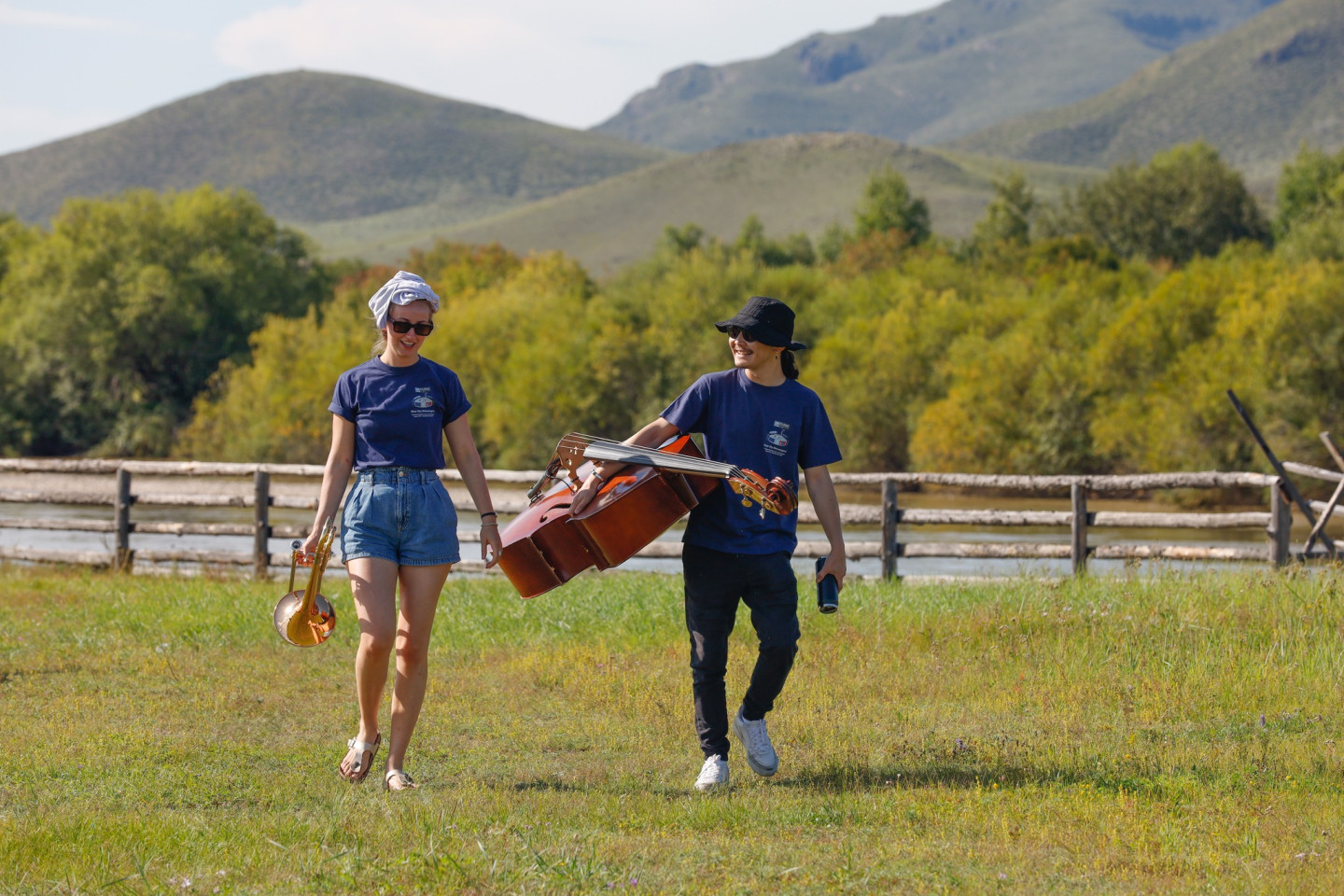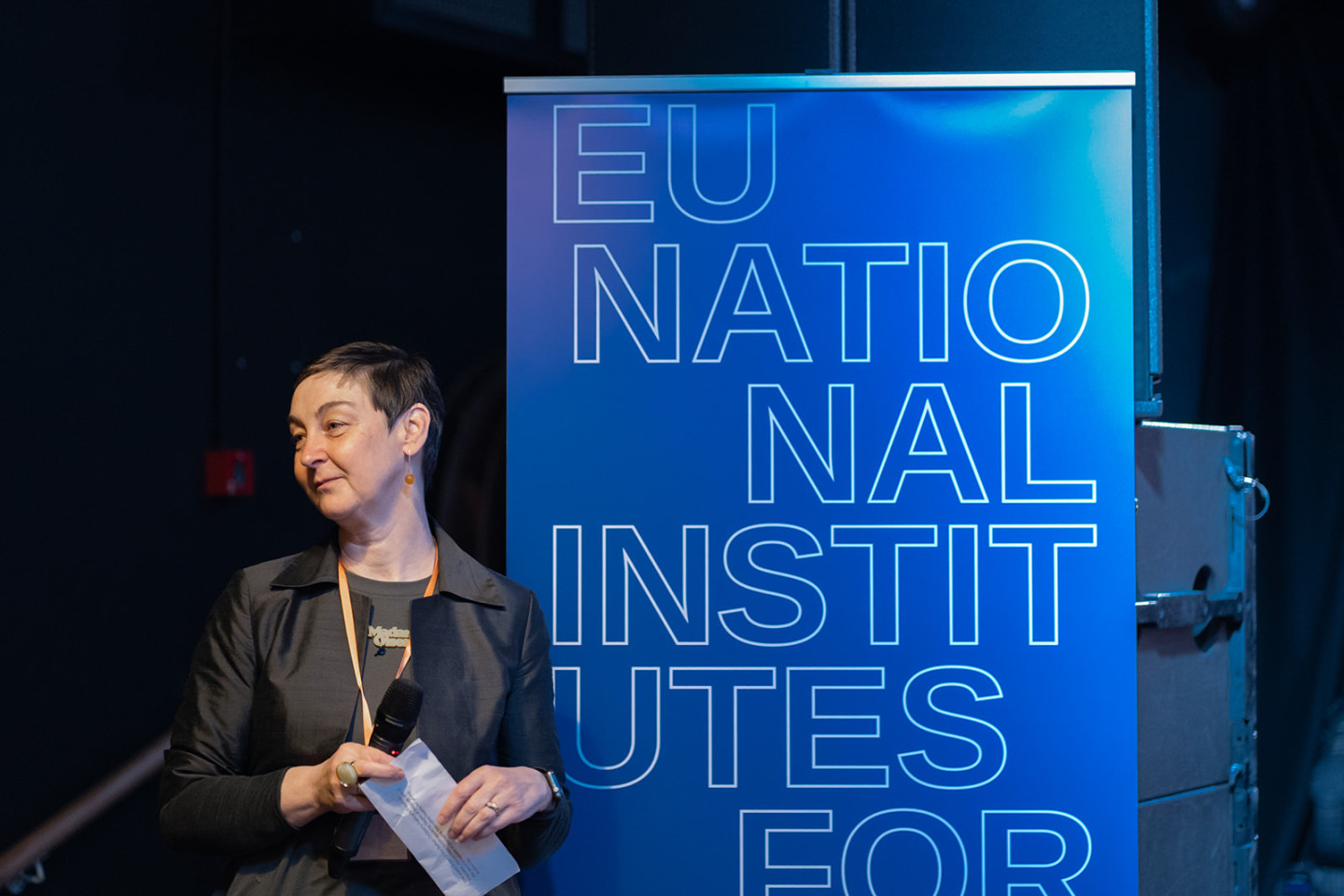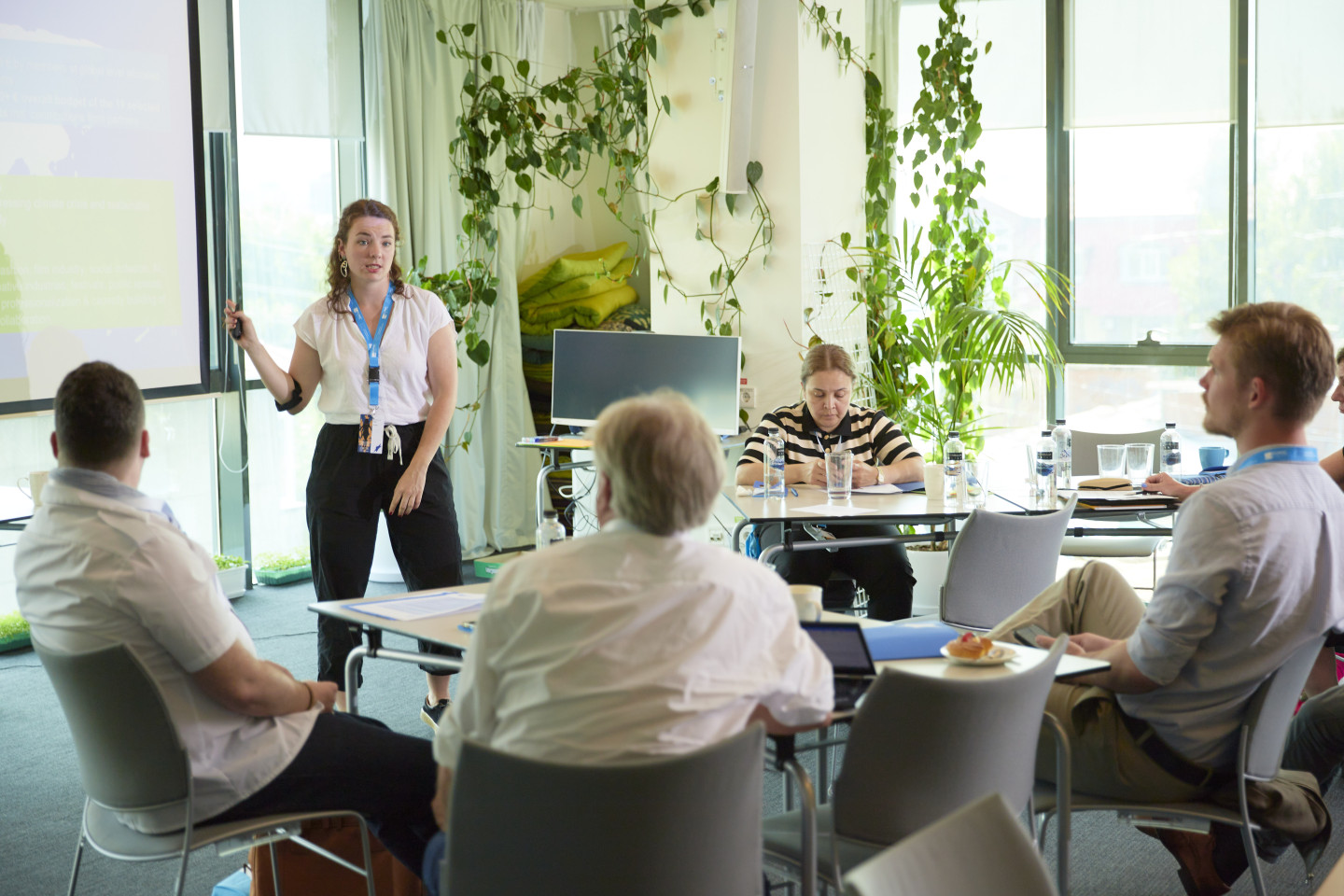Structuring your cluster and coordinating effectively
Establishing an organisational structure that suits your cluster is essential for working effectively as a diverse group.
Every cluster is different, and active participation can take many forms. Below you’ll find practical guidance to help you organise your work in the most efficient and enjoyable way.
Cluster need to have these two documents ready and updated:
☑️ Cluster Charter signed by all Full Members
☑️ Cluster Strategy
The cluster charter
The Cluster Charter formalises the collaboration between members. It outlines your cluster’s objectives, governance model, membership and shared identity.
If contradictions arise between the Cluster Charter and the EUNIC Cluster Guidelines, the Guidelines prevail.
Only Full Members and Associate Members at global level sign, date and stamp the Cluster Charter. Once signed, send it to us - the EUNIC Director will countersign and validate it.
A template charter, approved by the EUNIC General Assembly, is available to download below.

Playing to your strengths
Develop a governance model that matches the specific goals and strengths of your cluster.
Regularly exchange information about your planning cycles, strategies and priorities to identify synergies. Not all members need to be involved in every activity, but being part of a cluster means being committed - and everyone can bring something to the table.
Meet regularly in a way that suits you. Why not add a keynote speaker, a site visit or a social element to keep meetings dynamic?

Setting up a presidency team
Each cluster is led by a president, who acts as the main contact person, spokesperson, and liaison with the EUNIC office.
Some clusters choose to set up a presidency team - for example, one or two vice-presidents supporting the president - or a co-leadership model with several co-presidents.
Choose the setup that works best in your context.
Appointing a cluster coordinator?
Appointing a designated cluster coordinator can help professionalise the cluster’s work, support the presidency, and enable members with fewer resources to get more involved.
A coordinator can also provide continuity, maintain institutional memory, and support the effective delivery of projects - particularly those implemented jointly with EU Delegations.
Some clusters hire a coordinator, funded through membership fees or as part of a joint project with an EU Delegation. Coordinators are often hired as freelancers, interns, or on a fixed-term contract for the duration of a project.
One EUNIC member - often the president or a member with administrative capacity - signs the coordinator’s contract on behalf of the cluster.
membership fees?
Although optional, some clusters use membership fees to cover running costs. These can be the same for all members or differ for Full and Associate Members. Amounts generally range from €200 to €2000 per year.
A membership fee should never be a barrier to participation in the cluster, nor should it prevent new members from joining. Clusters should remain inclusive and flexible, using a “variable geometry” approach - members support the projects that best match their priorities and capacities.

Several members from the same country?
In some cases, more than one EUNIC member from the same country is active in a cluster - for instance, both an embassy and a cultural institute. In such cases, neither organisation has a priority over the other. Both have equal voting rights and can serve as president.
We encourage same-country members to work closely together, but to avoid joint presidencies.
Here's an example:
Spain is represented by two EUNIC members, Instituto Cervantes (operating through its network of cultural institutes) and AECID (operating through cultural centres and the Cultural Attachés of Spanish Embassies). In cities where both Instituto Cervantes and the Spanish Embassy are present, both can be Full Members of the same cluster.

and finally… don’t forget to have fun!
Organising and running a cluster should not become overwhelming. Focus on meaningful, manageable activities where members can contribute in ways that make sense for them.
You can even set up small working groups around shared interests, beyond project implementation. And always try to keep meetings engaging - consider inviting external speakers, planning site visits or linking up with local events.
Make it enjoyable. And remember to have fun!
Remember to have fun!
Types of cluster members
There are different ways organisations can be a member of a cluster. These membership types are defined in line with the EUNIC statutes and have been agreed by the EUNIC General Assembly. The type of membership an organisation can hold at cluster level depends on its membership status within EUNIC at global level.
